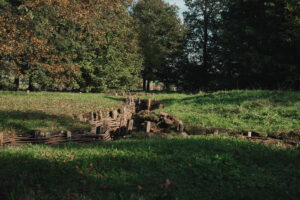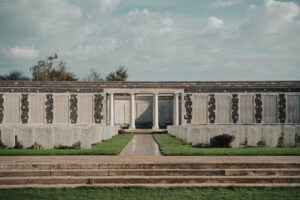✓ All-inclusive
Leave your worry at home, we take care of everything.
✓ Devoted local guide
Explore Flanders Fields with someone who lives and breathes its history.
✓ Off the beaten path
Our route also includes the lesser-known sites that most tours miss.
✓ Unforgettable narratives
Powerful storytelling makes sure the past is something you’ll never forget.
What our previous guests say:
We went on a tour with Visit Flanders Fields and had a fantastic day, completely adapted to our needs. Professionally handled, beautiful, comfortable van with air conditioning to drive from Bruges to Ypres. We were not bored for a moment. Highly recommended!
The Flanders Fields Battlefield Day Tour is a deeply moving experience. Walking through the battlefields, cemeteries, and memorials brings the history of World War I to life. Niels provides insightful context, making the stories behind each site even more powerful.
What made this tour exceptional was the mix of facts with emotional real stories, our interest and empathy for what happened was made bigger by having this tour, especially with our guide who was on his own a great and knowledgeable person! Definitely recommend it!
Connecting you to the past
Step beyond the textbooks into a battlefield that shaped our world. Our intimate, private historical tours through Flanders Fields bring the echoes of the Great War to life. Visit the monuments. Feel the weight of their stories. Experience the Western Front like never before.
Where poppies bloom and stories endure
Flanders Fields, once a major battleground during World War I, witnessed some of the most intense and tragic fighting of the war. Soldiers from around the world made the ultimate sacrifice, leaving behind a legacy of courage and resilience. Today, the fields are dotted with memorials and cemeteries, a poignant tribute to the lives lost and a powerful reminder of the war's enduring impact. Among these sacred sites, poppies bloom as symbols of hope and renewal to remind us that from great loss, new life and meaning can emerge.
Read the history here
Don’t just read about history – live it.
Our personalised tours offer a rare opportunity to honour the courage and sacrifice of those who came before us.
Rouler Retro Bruges
Part of brugge.tours


